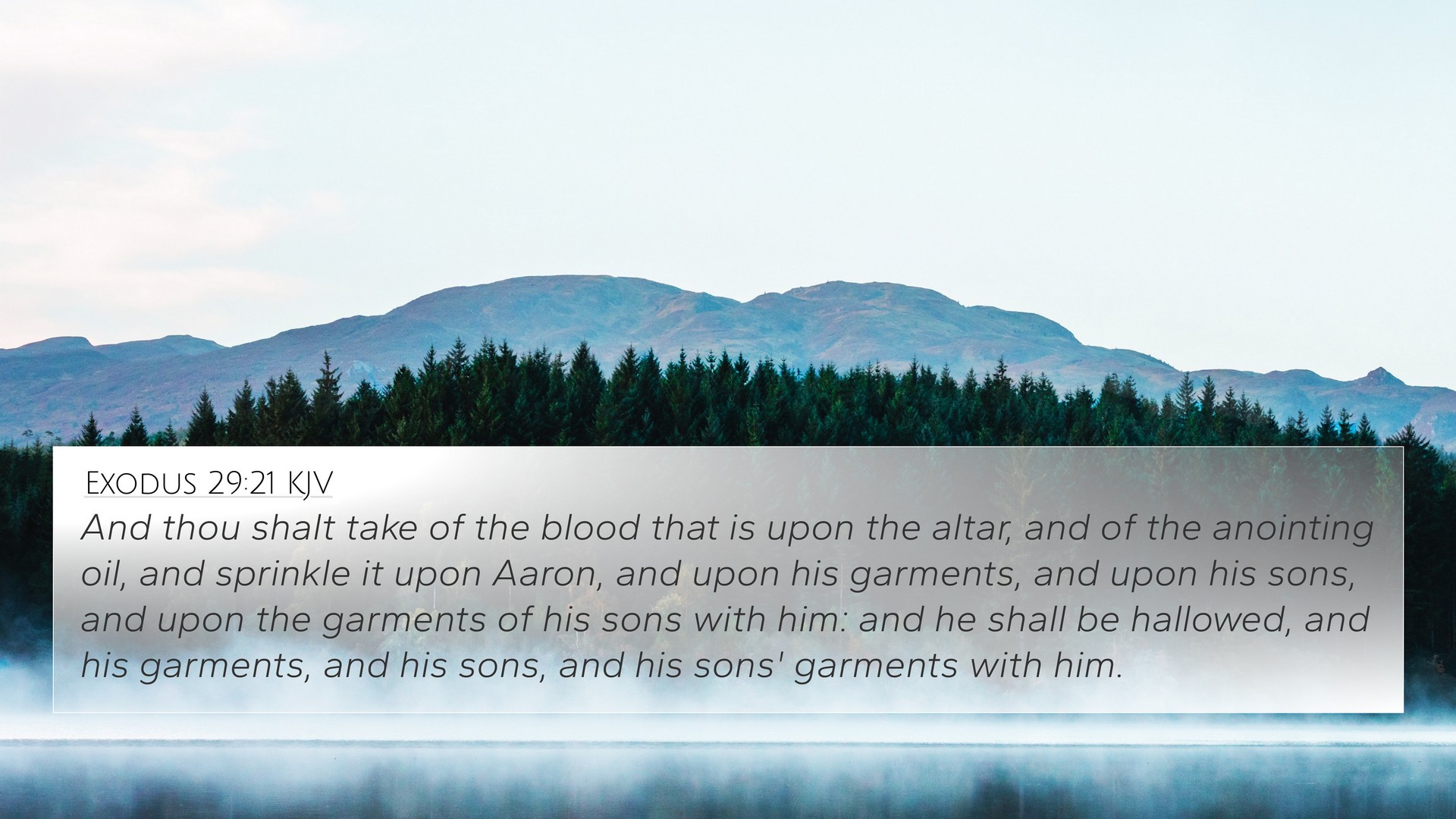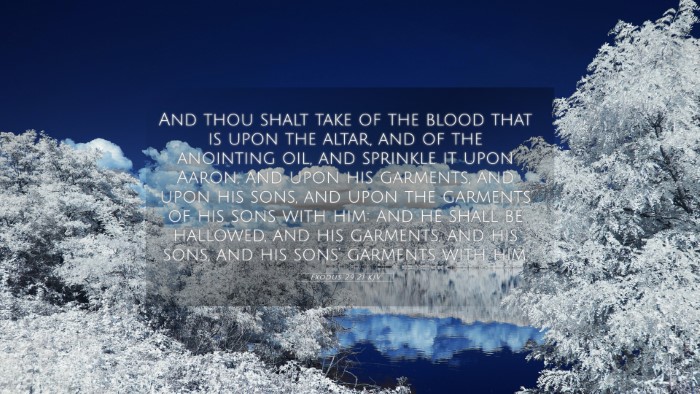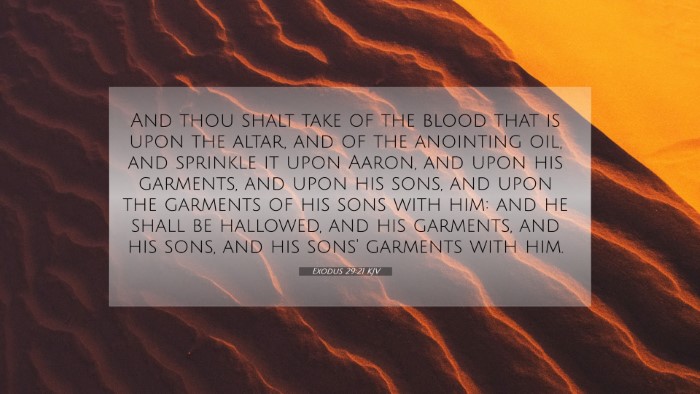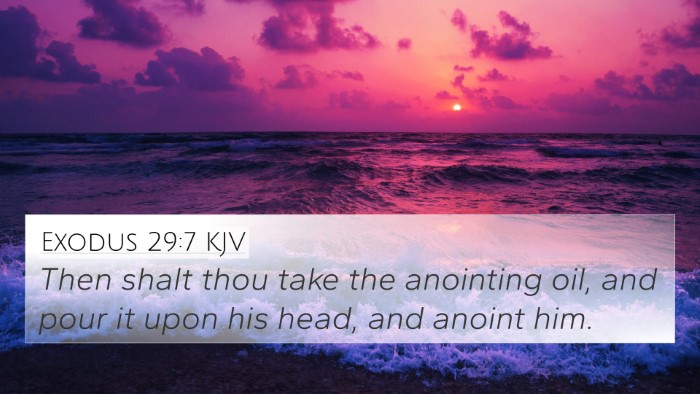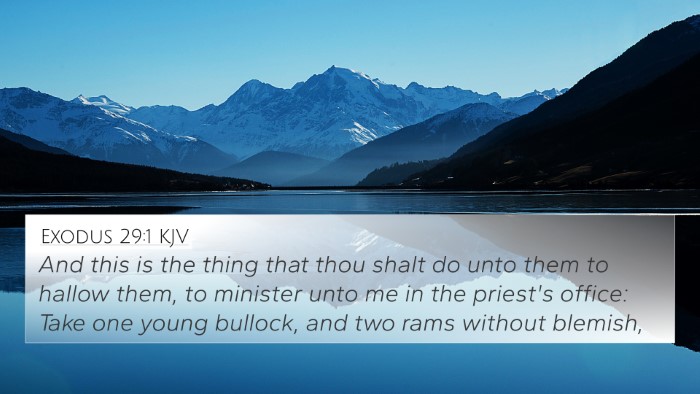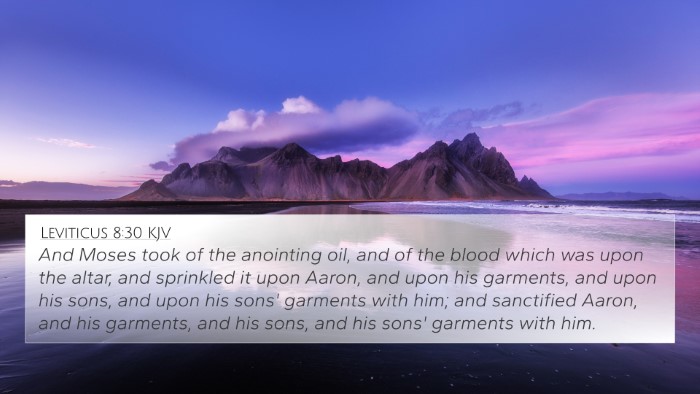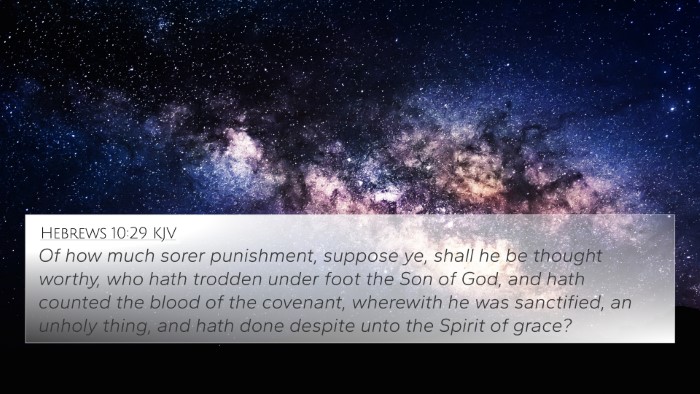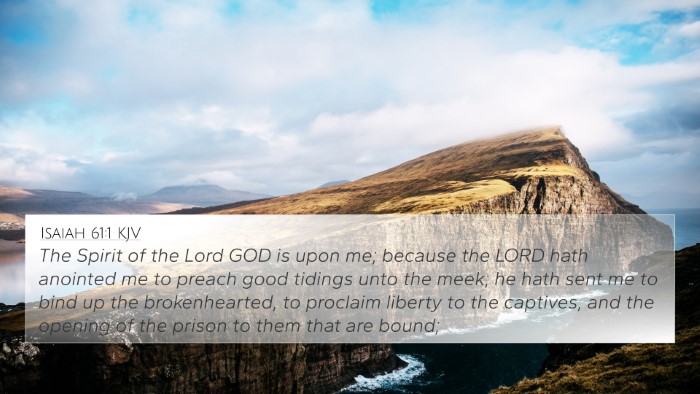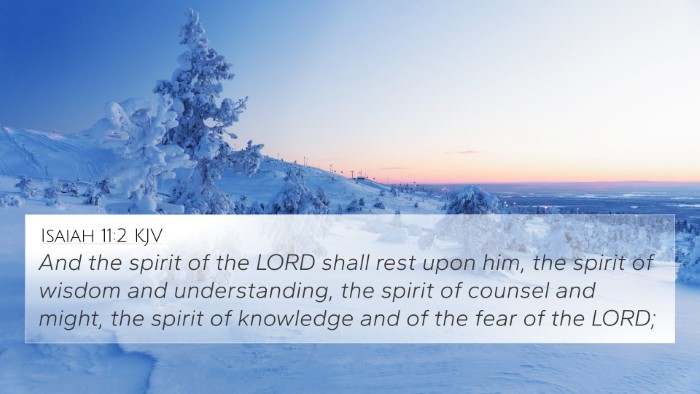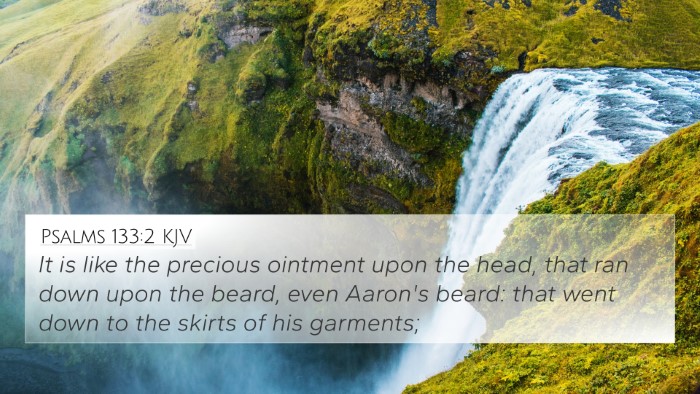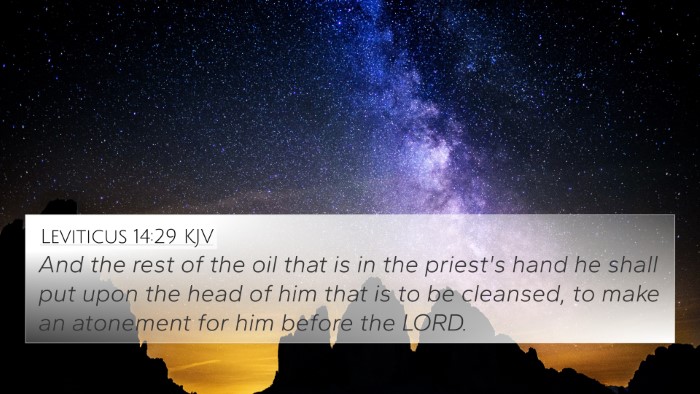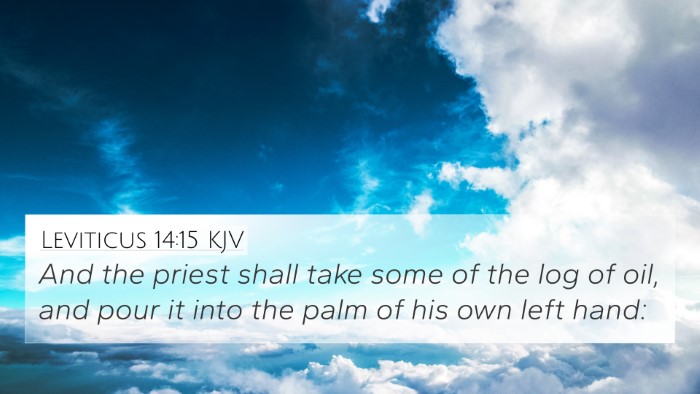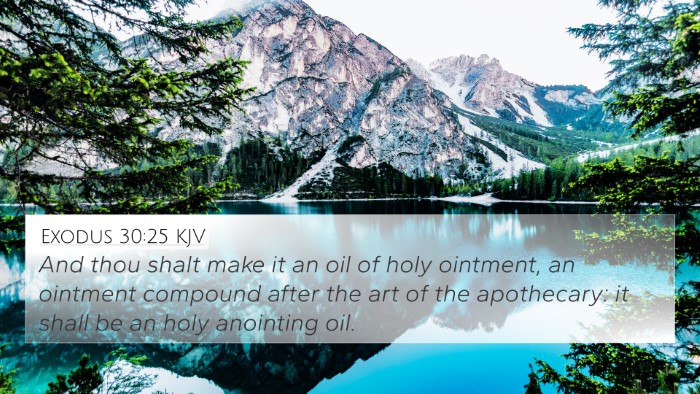Exodus 29:21 - Meaning and Interpretation
Verse: Exodus 29:21 mentions the instruction for consecrating the priests through the use of the blood of the sacrificial offering and applying it to their ears, thumbs, and big toes, symbolizing total devotion and sanctification.
Summary of Insights from Public Domain Commentaries:
- Matthew Henry: Emphasizes the importance of the ceremonial actions involving blood, which represent cleansing and being set apart for God's service. The blood signifies the covenant and the necessity of atonement, showing that the ministry requires the acknowledgment of sin and the need for redemption.
- Albert Barnes: Focuses on the ritualistic elements of the consecration process. He notes that placing blood on the ear, hand, and foot signifies dedicating all faculties to serve the Lord. This comprehensive application illustrates an assurance that all actions, hearing, and walk in life should be aligned with God’s commands.
- Adam Clarke: Discusses the symbolic nature of the blood as a means of purifying and preparing the priests for their sacred duties. Clarke highlights the implications of the physical actions taken during consecration as a metaphor for spiritual readiness and the seriousness of the priestly role in mediating between God and people.
Thematic Connections to Broader Scripture
This verse connects with several themes throughout Scripture, particularly the importance of consecration, sacrifice, and dedication to God's service. It can be significantly cross-referenced with the following verses:
- Leviticus 8:22-23: The similar ceremony of the priests being consecrated, indicating continuity in sacrificial practices.
- Hebrews 9:22: Underlining the necessity of blood for the remission of sins, establishing a foundational principle of sacrifice in both Testaments.
- Romans 12:1: Paul’s call for believers to present themselves as living sacrifices, resonating with the entire being dedicated to God.
- 1 Peter 2:9: The royal priesthood concept emphasized in the New Testament draws parallels to the Old Testament practices of consecration.
- Exodus 24:8: The blood covenant, reinforcing the significance of blood within the context of commitment to God.
- James 4:8: Encouragement to draw near to God, symbolically tying into the idea of being cleansed for service.
- Psalm 51:7: The plea for purification, echoing themes of sanctification highlighted in Exodus 29:21.
- John 13:10: Jesus’ teaching on the necessity of being fully clean connects to the consecration practices described in Exodus.
- 2 Corinthians 6:17: The call to separate oneself and be dedicated to God aligns with the themes of holiness in the priests' consecration.
- Hebrews 5:4-5: Discusses the role of the high priest, connecting the significance of these rituals to Christ's ultimate sacrifice.
Understanding Consecration in Biblical Context
Consecration is a recurring theme in the Bible, where God sets apart individuals or objects for sacred purposes. Exodus 29:21 stands as a significant theological indicator of this principle in the Levitical priesthood, influencing understanding in both Old and New Testament contexts. The application of blood on specific body parts illustrates a holistic devotion to God's service, emphasizing that every aspect of a believer's life should be focused on obedience and worship.
Implications for Believers Today: While the sacrificial system brought in the Old Testament is fulfilled in Christ, the underlying message of being wholly devoted remains relevant. The act of consecration challenges modern believers to reflect on their commitment and dedication to live out their faith actively, inspired by the sacrificial love demonstrated through Jesus.
Exploring Cross-References
When studying Exodus 29:21, it is beneficial to explore cross-references to identify connections and deepen understanding. Here are some tools and methods for effective cross-referencing:
- Bible Concordance: Utilize a concordance to find related verses that mention consecration, sacrifice, and priestly duties.
- Bible Cross-Reference Guide: Employ a guide to discover direct links between verses and themes in the Old and New Testament.
- Bible Chain References: Use a chain reference method to follow themes through various books of the Bible.
- Cross-Referencing Bible Study Methods: Engage in studies that prompt analysis of parallel themes across different scriptures.
- Comprehensive Bible Cross-Reference Materials: Gather a broad range of resources that detail inter-Biblical dialogues and thematic connections.
Conclusion
Exodus 29:21 serves as a pivotal verse regarding the serious nature of consecration and atonement in the priestly system. By understanding its meanings through public domain commentaries and exploring related verses, individuals can gain a richer appreciation of God's call to holiness and service. The interconnectedness of biblical texts provides a more profound insight into how believers today can reflect these ancient practices in their contemporary faith journey.
